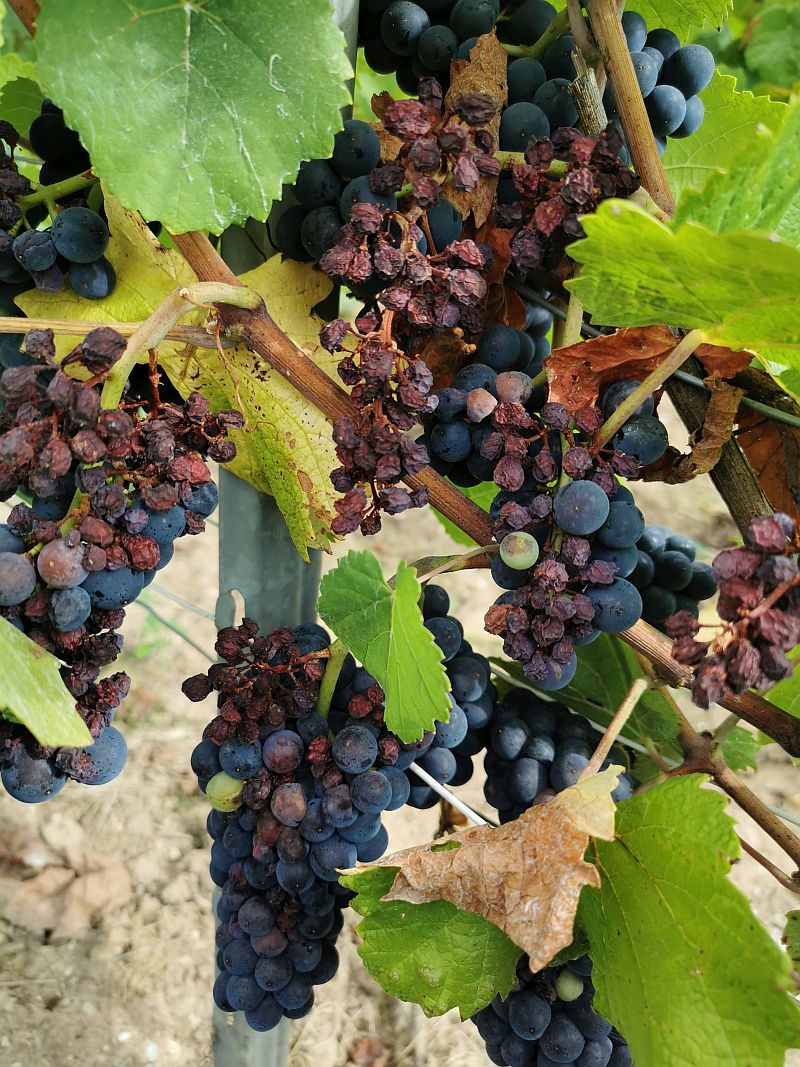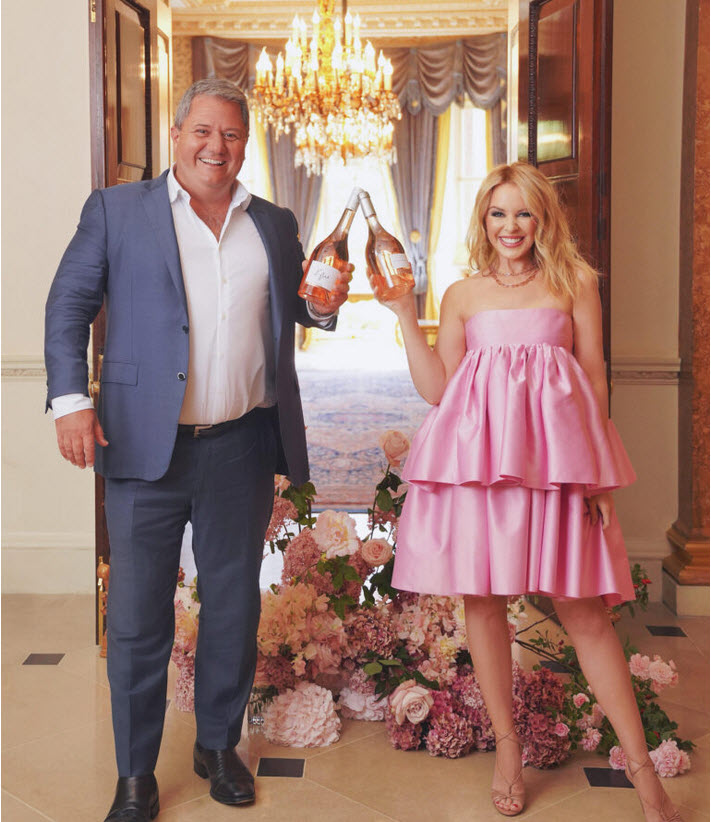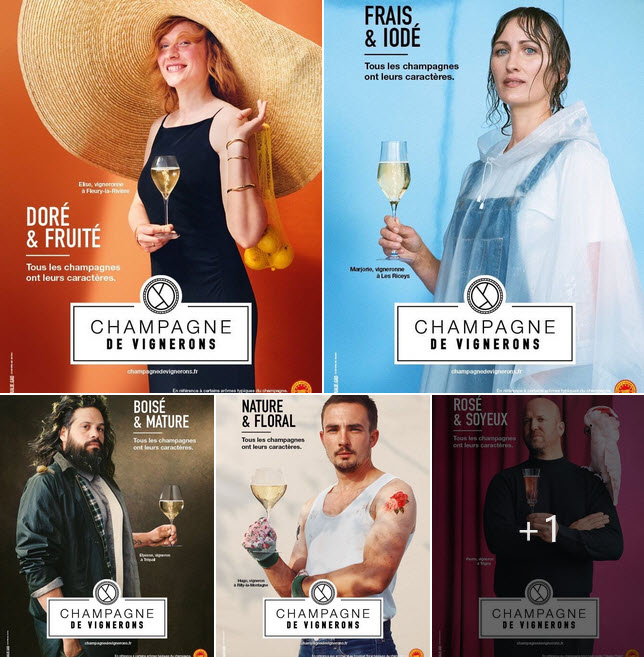CHAMPAGNE BULLETIN JUNE 2022
In this month’s Champagne Bulletin
- As shipments continue to grow, the big question on everyone’s lips in Champagne right now is ‘What will this year’s harvest be like?’
- More success stories for private wine brands
- The two faces of Champagne: NFTs and SGV
If you’ve been following the news of the weather in France this year you would be forgiven for thinking that the prospects for this year’s harvest in Champagne are not looking great.
There were reports of severe and widespread frosts in April, then of violent storms that left many vineyards badly damaged and more recently, to add to the woes of the vignerons, there have been exceptionally high temperatures that could potentially fry the grapes on the vines.
All this is true, yet for the most part it was wine-growing regions in the south and south-west that were affected and Champagne has come out of all this relatively unscathed and it’s a case of ‘ So Far, So Good’.

Size matters
Of course, everyone would like the quality of the grapes to be brilliant, but this year, the size of the harvest is probably more important, and that issue will be decided in the next two months.
The importance of the question needs to be set in context:
In the month of May champagne shipments continued their upward trend that has been unbroken for more than a year. Of course, the past two unusual years don’t necessarily provide the most reliable basis of comparison on a month-by-month basis, so it’s more relevant to look at the Moving Annual Total (MAT) which shows the trend over a 12-month period.
This shows that the total number of bottles shipped over the past 12 months reached 335 million bottles – that’s only a couple of million bottles shy of the highest figure ever recorded and the trend is still upwards.
This would be unmitigated good news if it weren’t for the fact that, for reasons that are not necessarily linked to the amount of grapes available to pick, the weight of grapes picked in past two harvests has been disappointingly small.
This has resulted in stocks in the cellars, more or less all across Champagne, being low, or even very low, to the extent that some champagne makers have taken the decision to simply stop sales to some countries or customers. It’s a painful decision but if you simply don’t have enough bottles, what else can you do?

The timing of the harvest is becoming ever more clear with every passing week and judging from the development of the vines it appears that picking with start in the first week of September. This is based on the rough and ready calculation that one has to wait 90 days after the flowering of the vines and, this year, that happened in early June, about 10 days earlier than the historical average.
That brings us back to the size of this year’s harvest and given the number of different actors in Champagne each of whom may have differing priorities, coming up with an answer that suits everybody is not easy.
Just about everyone agrees on the general principle that it needs to be a big harvest, but not always for the same reasons
The most obvious argument for a large harvest is that it will bring supply back in line with current demand. This has traditionally been the primary consideration when the picking quota is fixed each year.
When one looks deeper into the matter however one might conclude that the famous brands would not mind too much if supply continued to lag behind demand. After all the appeal of an established brand is that it can benefit from strong demand and limited supply to increase prices and margins which is the ultimate objective for the big brands.
At the other end of the scale are the hundreds of small producers and the thousands of vine growers who supply grapes to the larger houses. Most people in these groups are in favour of larger harvests but for slightly different reasons.
For many in these groups the main concern is survival and if the harvest quota is too low, the former group cannot pick enough grapes to produce the number of bottles they need to make profit, and the latter group cannot earn enough revenue from selling grapes and may be forced to sell their vineyards.
And who would be the most likely buyers in that case?
Many would say the big houses who have the desire and financial means to buy more vineyards but who, according to some, would thereby increase their influence over the entire Champagne industry to an unhealthy extent.
 Faced with this complex situation and many heterogeneous interests, one organisation, Les Vignerons Indépendents de Champagne has already put forward some innovative proposals that, they say, take a more sensible long-term view rather than just looking at supply and demand over a short period.
Faced with this complex situation and many heterogeneous interests, one organisation, Les Vignerons Indépendents de Champagne has already put forward some innovative proposals that, they say, take a more sensible long-term view rather than just looking at supply and demand over a short period.
They argue for a minimum quota fixed for an entire 5 year period, subject only to there being enough grapes on the vines. In addition, they are calling for increases in the amount of wine that can be held in reserve in abundant harvest years and which would enable the smaller operators to keep going in the event of a small harvest due to natural, rather than economic, reasons.
The next couple of months should reveal much more about all these topics, but, as ever in Champagne, there’s far more going on behind the scenes than the average champagne consumer would ever imagine.
Private brands
There continues to be a stream of success stories in the press about successful celebrity wine brands
Singer song writer Gary Barlow has launched a range of wines from Spain and Jon Bon Jovi has launched a rosé wine from Languedoc.
Meanwhile, Kylie Minogue’s brand goes from strength to strength in the UK with sales of over a million bottles and a brand value estimated to be over £18 million pounds sterling - No wonder she's smiling !

Picture: Drinks Business
You don’t have to be a global celebrity to create your own wine brand (although it helps!) and you don’t need to sell over a million bottle to have a success on your hands.
A strong idea, a good network, careful planning, and meticulous execution count for a lot, so if you’d like to discuss your own champagne brand, contact me by email for an exploratory discussion.
This email address is being protected from spambots. You need JavaScript enabled to view it.
The two sides of Champagne: NFT – SGV
Many champagne lovers don’t realise that Champagne is a bit like an iceberg – they get to see and enjoy the relatively small number of well-known brands (less than 50 I would say) which exude the imagery of opulence and luxury on which much of the success of champagne has been built. That’s perfectly understandable because these brands are widely available, often well-advertised and account for the lion’s share of all champagne sales.
In contrast, there are hundreds of other brands made by thousands of small producers most of whom, despite the often-excellent quality of their wine, enjoy nothing like the wide distribution and public awareness of the bigger brands.
This dichotomy was brought into stark relief recently by the publicity around NFTs or Non-Fungible Tokens and by the latest marketing campaign launch by the Syndicat Général de Vignerons, a body representing the lesser-known and smaller champagnes mentioned above.

NFTs have been used in many industries in recent years to authenticate the provenance of products but their introduction into the very traditional wine industry is much more recent and three companies, Winechain, Blockbar and Wokenwine have been in the press in the past couple of weeks.
All three companies offer benefits that will appeal first and foremost to serious wine lovers and collectors, most of whom are also very wealthy. Consequently, the wines which use NFT technology are invariably the rarest, most prestigious and most expensive in the world, in short, wines whose authenticity must be proven beyond any doubt to those involved in wine investing, be that auction houses, collectors or the producers themselves.
A common ambition of the people and companies involved in wine NFTs is to attract a new and younger set of clients into the world of wine investing whilst enhancing and perpetuating the aura of opulence and exclusivity associated with the wine collector’s lifestyle and the products he or she buys.
Until now, NFTs have been adopted almost exclusively by spirits brands, but a few iconic champagne brands such as Pierre Peters, Jacques Selosse and Bérêche & Fils have just placed a few selected cuvees with Wokenwine and it surely won’t be long before a few leading champagne brands take advantage of this cutting edge, dynamic and youthful trend.
Contrast this approach with the marketing campaign just launched by the Syndicat Général de Vignerons which comprises a series of pictures of real champagne makers designed to promote the many different styles of champagne and the character of the people who make them.

Bear in mind that because this campaign will be used in France rather than export markets, it is subject to very strict advertising rules that prohibit any suggestion that might link the consumption of alcohol with increased success, happiness or enjoyment.
The purpose of NFTs is prove the authenticity of products that are rare and expensive as evidenced by the screenshot above from Blockbar’s website. The imagery associated with those brands is one of luxury and aspiration – in a word, it is exclusive.
The SGV campaign provides a different sort of authenticity conveyed via images of real people. The products concerned are down-to-earth but that too has a value that many will find appealing – in a word the imagery is inclusive.
Both approaches have their place and their own value. Without doubt both are worth discovering although I must admit to finding the SGV campaign really brilliant and I like it so much that I can’t resist posting one more picture from the series

Until next month…
JH
